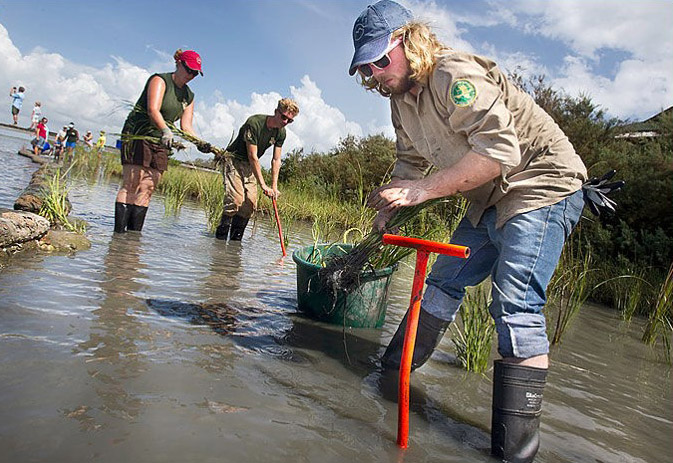RESTORE
As a response to the Deepwater Horizon oil spill, the Resources and Ecosystems Sustainability, Tourist Opportunities, and Revived Economies of the Gulf Coast States Act (RESTORE Act) was signed in 2012 and seeks to restore the Gulf Coast’s ecosystem and economy. The RESTORE Act established the Gulf Coast Ecosystem Restoration Council which includes the Governors of the States of Alabama, Florida, Louisiana, Mississippi, and Texas, as well as the Secretaries of the U.S. Departments of Agriculture, the Army, Commerce, Homeland Security, and the Interior, and the Administrator of the U.S. Environmental Protection Agency. NOAA represents the Department of Commerce on the Council. NOAA Fisheries’ Office of Habitat Conservation is implementing two large-scale, Gulf of America-wide initiatives—the Gulf Coast Conservation Corps and Connecting Coastal Waterways. The two initiatives were approved under the Council-Selected Restoration Component in their first Funded Priorities List. This page provides the public with information and files associated with each initiative. Visit the Gulf Coast Ecosystem Restoration Council website for more information about the Council, the RESTORE Act, and funded projects.
Gulf Coast Conservation Corps

The Gulf Coast Conservation Corps (GulfCorps) Program has established a regional workforce training program to support long-term Gulf Coast restoration implementation and benefit local communities. GulfCorps crews are made up of local young adults in each of the five Gulf Coast states. Through their participation in the program, corps members gain skills in restoration implementation such as building living shorelines, invasive species control, controlled burning, and carpentry for recreational access enhancement projects. These skills are used in collaboration with project partners, including The Nature Conservancy, The Corps Network, the Student Conservation Association, and others to restore habitat at coastal preserves, land trusts, and other state and locally owned properties. GulfCorps brings together crew members from all backgrounds and gives them the opportunity to work together to restore the Gulf environment while learning important job training skills.
Visit NOAA Fisheries’ GulfCorps page for more information.
Connecting Coastal Waterways
The Connecting Coastal Waterways (CCW) initiative involves engineering and design, construction, and performance monitoring of six hydrological restoration projects in Florida (Robinson Preserve and Money Bayou), Alabama (Fish River, Meadows Tract, and Oyster Bay), and Texas (Bahia Grande). Through the construction of roads and other anthropogenic structures, water flow and environmental health on these project sites was diminished, and the fish and wildlife who rely on these waterways are impacted. Each project will be individually designed to allow the affected canals, bayous, and wetlands to return to a more natural state.

Hydrologic Restoration Opportunities in Select Gulf of America Watersheds
